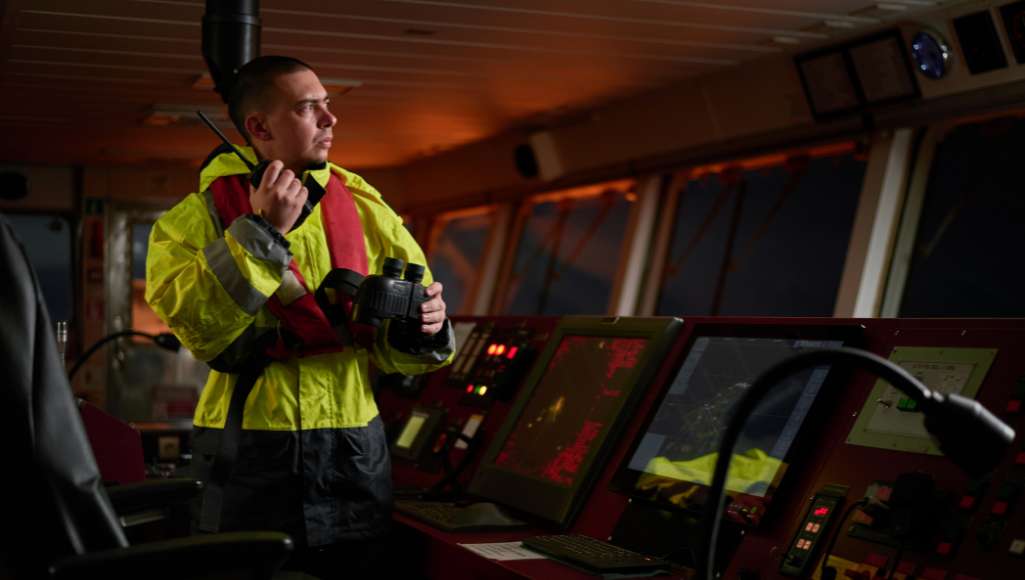
Crew Asset Management Investment to Reduce Risk and Expenses
An integrated approach to workforce sustainability in the maritime industry
The Current Paradigm of Crewing is Broken
About 1.9 million people make their living across a variety of jobs at sea, but the outlook for sustainable recruitment is, at present, rather bleak. From wages and working conditions to onboard culture, a number of factors are conspiring to drive people away from seafaring careers.
Further, between reactive healthcare and the use of Pre-Employment Medical Examinations (PEME) as a basis for exclusion, more than 10,000 seafarers a year lose their job due to chronic illnesses – many of which impacts the most experienced and valuable crew as they reach their mid-40’s This has now led the International Chamber of Shipping (ICS) to predict a shortfall of 90,000 trained officers by 2026.
To compensate, the maritime industry has been rapidly promoting less experienced, younger seafarers to senior positions, which is no doubt leading to more insecurity and stress on the job (with hypertension as a side effect), but also to increased risk factors to both vessel and crew. Medical claims for crew injuries are growing in both frequency and severity, and on average 20% of all ships worldwide are making at least one medical diversion each year. This is an unsustainable situation that will only grow more costly over time.
The solution is to replace our current practice of a reactive approach to crew management with a preventive crew asset management solution.
The Actual Cost of a Medical Diversion
The hope is that this article will serve as a wake-up call to begin in-depth discussions on how we can build a more sustainable industry, starting with our most important asset – our crew. This article has drawn from publicly available journalism and industry reports, while recognizing that specific costs will certainly fluctuate between individual shipping companies and insurers.
Medical diversions generate two types of costs for ship owners/operators. First, there are direct costs, which are often reimbursed by a third party (insurance company or P&I club) in return for premiums.
Direct cost can include the expense of diverting the ship’s route, patient transportation from the ship to the hospital, admission, and care, repatriating the patient to their home country, sick benefits and more. Many of these direct costs are reimbursed, but not all, and there is usually a deductible, which we estimate at around US$10,000 per claim. Indirect cost of medical diversions, which typically cannot be reimbursed may also not be easily recognised as the result of a medical event. These costs can include lost productivity, unforeseen port fees, replacement travel and labour, overtime pay, case administration, higher insurance premiums and more.
On average, the total cost of a medical diversion and repatriation event is $180,000, with indirect costs estimated to be roughly 30% of this total – or $60,000 per case. For a fleet of one hundred vessels, the combined direct and indirect costs of medical diversions could be somewhere around $1.5 million per year.
The Staggering Costs of Chronic Health Conditions
To reduce the number of medical diversions, many maritime companies now require more stringent PEMEs. But in a world with a limited number of seafarers, where people continue to develop chronic health conditions at the same rate, this practice is not resolving the issue. Also, a PEME is a picture in time and a chronic condition can develop between PEME’s and not be detected before it is too late. In a closed system with a limited number of seafarers, strict PEMEs may reduce medical diversions, but they lead to increased crew turnover and a host of new costs.
Those 10,000 seafarers a year aforementioned – the ones who lose their job due to chronic diseases detected by PEMEs – must be replaced. But between selection, training, and agency fees (or, alternatively, department costs), recruiting a replacement candidate can easily cost around $40,000.
For our 100-vessel fleet example, where the annual cost of medical diversions is around $1.5 million. We will assume an average of twenty-two people per vessel, this means that replacing the fleet’s chronically diseased crew could cost the operator approximately $500,000 a year, bringing total annual expenditures to nearly $2 million.
These estimates do not take into consideration the impact of lost experience on the risk models that P&I clubs use to calculate premiums. For these P&I clubs, those calculations represent an average medical claim cost of $10,000 per insured vessel in the portfolio. This means that in a global fleet of approximately 80,000 deep-sea vessels, the industry is wasting a staggering $800 million per year by not focusing on its most important asset: human beings, like any critical business asset, require preventive maintenance.
5 Steps to Breaking a Broken Paradigm
When we consider the unsustainable costs of reactive healthcare, it begs the question: Why maritime companies would not use every available technology and innovation to break this paradigm?
As we do for life on shore, we should be leveraging every innovation to enhance the physical, mental, and social wellbeing of crew members to maximise profitability and sustainability.
Here are six innovations that maritime companies can take advantage of right now:
- Satellite communications: There are more satellite operators and constellations than ever before, and every seafarer can have high-speed access to global communications, entertainment, telemedicine and more.
- Data efficiency: Between transfer speeds and software advancements, everything can now be run ‘light’ from the cloud, reducing the need for onboard storage and duplication.
- Advanced hardware: From phones and tablets to medical wearables and peripherals, hardware advancements have made it easier and more cost-effective to monitor health. There should no longer be any mystery about the wellbeing of every seafarer.
- Medical technology: Many health issues can be handled remotely. Telemedicine has developed to a point where many chronic physical and mental health issues are more manageable than ever with the right protocols in place.
- Internet access: Web access connects seafarers with a progressively growing knowledge base and newly developed applications. Together, this wealth of shared intelligence can be utilised for their mental, physical and social benefit.
- Neuroscience: We now have extensive data to support the idea that the mental health of workers – especially at sea – is highly dependent on food, sleep, light, exercise, air quality, social wellness, environment and more.
Make Crew Health a Proactive Investment
Cardiovascular concerns are not only the most prevalent health issue; they are also the most expensive. But, looking at global medical costs, using PEMEs to keep people with cardiovascular issues out of seafaring is clearly not working. It would be much more effective to focus our efforts on day-to-day health preservation.
At present, 50% of all medical claims are injury related. What if we could use technology to help prevent injuries before they happen? This could include wearables that track health and sleep, devices that improve air quality and the overall working environment, better nutrition, regular exercise and more. Investing in workers’ physical and mental health, happiness, and alertness can reduce injury-causing errors.
Giving seafarers regular access to medical professionals by email, text, phone, and video allows them to catch and treat issues earlier, avoiding the increased costs and impact that come with letting small concerns snowball into larger problems. This could result in a maritime industry where diseases such as diabetes and hypertension are no longer in the ‘realm of exclusion,’ but managed proactively, as they often are on shore.
The WHO estimates that 20% of the world's CEOs have hypertension, but they are perfectly capable of doing their work. By that same logic, an experienced maritime officer with diabetes or hypertension should be able to perform their job safely and effectively with proper care and monitoring.
Taken together, all these measures and ideas have the potential to break the negative job spiral currently plaguing the maritime industry. If we could leverage all available science and technology into a proactive approach to managing our most important asset – crew members – it would go a long way to attracting new candidates, keeping experienced people in critical roles, and to reducing the risk of costly accidents and injuries.


